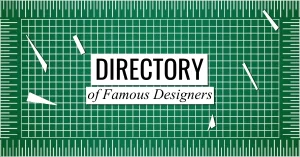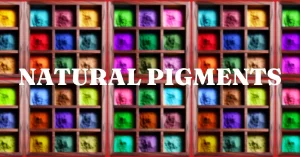This blog post will explore industry-standard branding design job requirements. Do note, that this post will consider only the visual design work in a branding design package. Other elements like formulating the mission, vision, core values and brand personality are the jobs of copywriters and marketing professionals.
If you are a full-time graphic designer looking to work with reputable companies for a full branding design package, then this blog post is just what you need. You will learn how to prepare your own branding design package by understanding and including the design services listed below.
Before you understand the deliverables of a brand design job project, it is important to understand the licensing of your work. It is wise to look up the size of the company, area of operation and perhaps even market size. This is because you don’t want to overcharge a small local ice cream shop or undercharge a large restaurant chain like McDonald’s that operates worldwide. A “full buyout” or a full licence for a design can be expensive. This is why a company should be charged according to the size of its business.
Branding Design can be an expensive design project because the elements you design will be used in perpetuity, worldwide and exclusively by that company alone. Because obviously, you cannot sell part of their logo to another company. You can re-sell that spot illustration of a rose to a soap company in Florida and a scented candle company in Korea. The rose is not usually part of the brand identity like a logo.
Once you have read this blog post, it would be helpful to also read the Copyright and Licensing for Art and Design post. You will have a detailed understanding of the full business of successfully working on a Brand Design job.
Branding Design Job Meeting
Before you even begin the design work, it is obviously important to have at least a meeting or two with the company. Preferably, upper management or the staff that makes the final decisions should be in this meeting. You will have to discuss brand positioning, the company’s goals, values and the product’s perception. All these factors combine to form a “brand personality.”
For instance, you would buy a shirt with vivid colours for someone with a big personality. A calmer person may prefer the opposite. Similarly, forming a brand personality will be your guiding compass in designing for visual branding.
To be proactive, a good tip is to keep Pinterest open on a separate tab at the time of this meeting. You may then ask questions like, “If your brand were a person, how would you describe their personality?” While you record these answers, you can pull up random images that you feel should go on a mood board. This mood board is not necessarily to show your employers. Rather, you can print it out as a collage and pin it around your desk. This can help a great deal with brainstorming, rough sketches and concept art.
Logo Creation
A logo is the most important design piece in a brand design project. Every other design element or feature revolves around the logo. This is why it is important that the logo should be a close representation of the brand’s personality. Before working on Adobe Illustrator for your logo, it can be helpful to produce a few rough sketches in a notebook. Getting your client’s input on the sketches and working from there can save a lot of screen time and edits. Being able to make an effective logo is one of the most important branding design job requirements.
Alternative Logos and Emblems
There are “full logos” with the entire company name. Some companies have slightly informal logos with just the initials. There are Wordmark logos with just the type. Also, there are logos with just the mark or emblem and no type. The kind of logo used on a letterhead is different from the one you might choose to put on a coffee mug. This is why the designer offers different variations of the same logo depending on the company’s needs.
Asset Creation
Using brand assets repeatedly gives the company recall value. Also, it can be free publicity for a designer as this is where their work is seen in the real world. Common assets that a company uses are things like packaging, labels, slogan font and design, shop signage, banners, billboard templates, mugs, notepads etc. While some of these assets are usually charged as separate projects, a designer may offer them for an added price in the branding design package. Branding design job requirements will often have all these assets listed as deliverables.
Motion Graphics + Social Media Templates
These days company advertising and publicity are incomplete without social media. Designers tend to offer one or two image templates for announcements, sale seasons and such. Also, video “Intros” and “Outros” for video ads. Once again, this is an added deliverable in a branding design project. These templates can be offered for an extra price. Usually, these are submitted in the form of PNG images and mp4 clips.
Colour Schemes
It is common for brands to have a pallet of 3 to 6 colours as their “brand colours.” These colours dominate most of the marketing, office collateral and even the colour of paint in the company’s office. Once this palette is finalised, the designer must submit the colours as hexadecimal values for web design and CMYK values for print production. Any other value such as RGB or Pantone may also be added.
Type Sets
Companies generally pick a combination of 2 or 3 fonts that make a good combination. Keep in mind that these fonts can be used anywhere from formal HR letters to magazine adverts and even billboards. It is wise to purchase fonts that have a full font family and that are compatible across all devices. Picking a wholesome, compatible, easy-to-read type set can help the company do prompt work in the future. It is a rule of thumb that the 3 fonts should be a heading, sub-heading and body font.
Office Collateral
When your design goes on objects that are only circulated within the company and between the employees, it is called office collateral. These items include letterheads, envelopes, business cards, rubber stamps, watermarked documents, PowerPoint templates and even email signatures.
Branding Guidelines Document
When a designer is finished with the project, they are on to the next job. It is a hassle and unnecessary expense in consultation fees to contact them time and again for design queries. This is why branding designers make what is called a “branding guidelines document” and submit it to the company as a PDF.
There are many free templates online for branding guidelines documents. These documents instruct the people of the company where on the page a logo is to be placed. How much px distance between logos and page corners? The font which is only to be used for titles and not for paragraphs. How to use colours and type for dark images, for light images etc. This document can be anywhere between 10 to 30 pages, or more, depending on the company’s needs.
This branding design job requirements post could teach beginners to deliver a visual design project like an absolute pro.







0 Comments